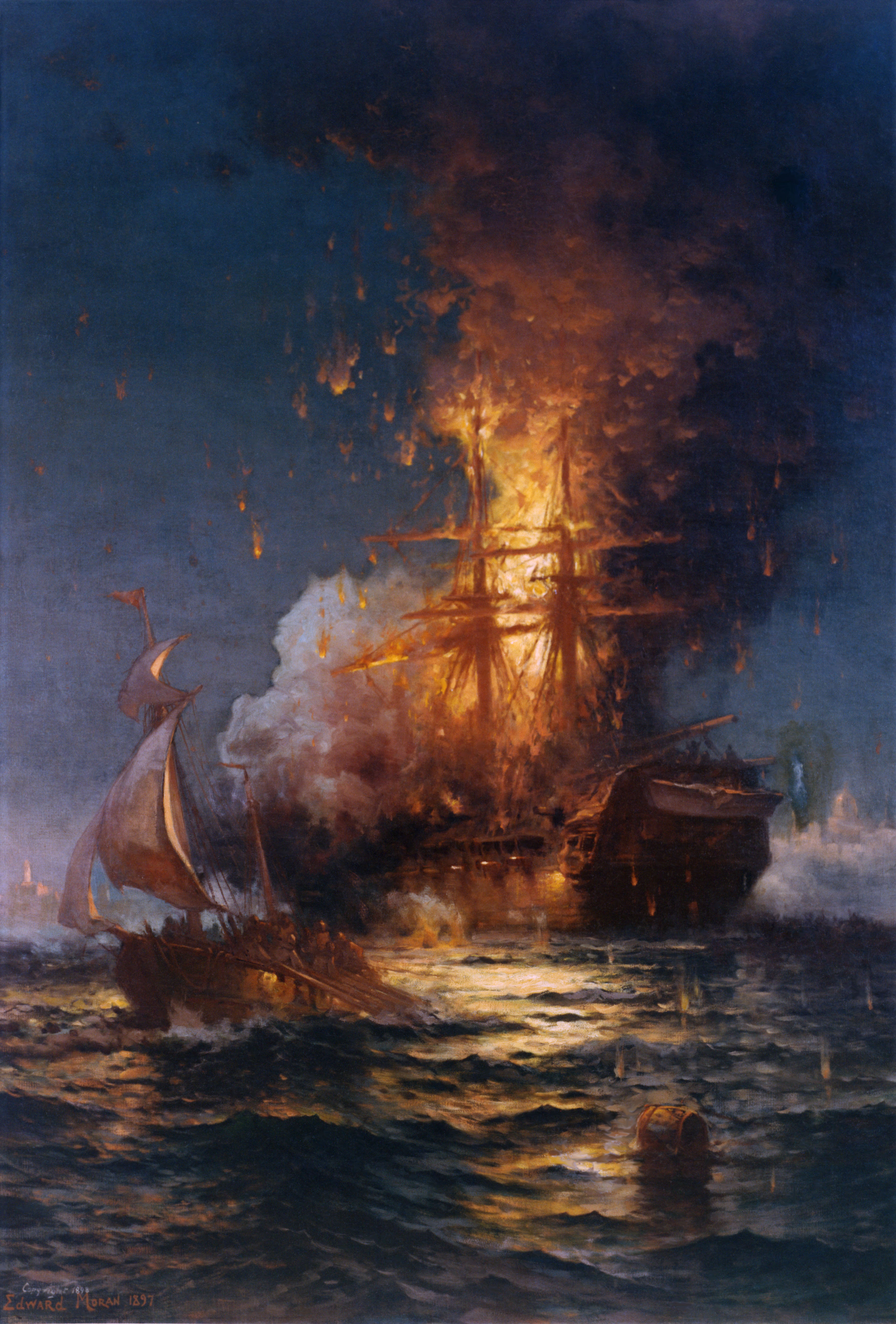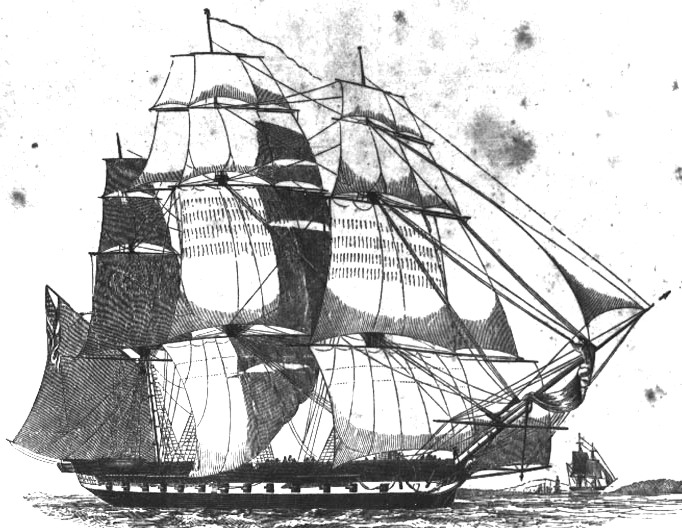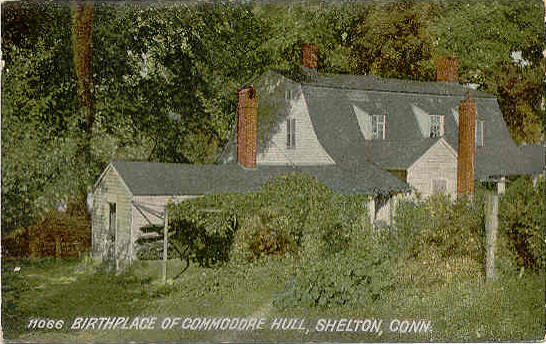|
USS Brandywine (1825)
USS ''Brandywine'' (formerly named ''Susquehanna'') was a wooden-hulled, three-masted frigate of the United States Navy bearing 44 guns which had the initial task of conveying the Marquis de Lafayette back to France. She was later recommissioned a number of times for service in various theaters, such as in the Mediterranean, in China and in the South Atlantic Ocean. During several instances she served as a role player in American gunboat diplomacy, a role she was well suited for with her large long-range 32-pounder guns and her short-range carronades which produced fragmentation and fire damage to the ship fired upon, as well as splinter and shrapnel injury to its crew. 1825: Conveying Marquis de Lafayette to France From July 1824 to September 1825, the last surviving French General of the Revolutionary War, the Marquis de Lafayette, made a famous tour of the 24 states in the United States. At many stops on this tour, he was received by the populace with a hero's welcome, an ... [...More Info...] [...Related Items...] OR: [Wikipedia] [Google] [Baidu] |
Mediterranean Squadron (United States)
The Mediterranean Squadron, also known as the Mediterranean Station, was part of the United States Navy in the 19th century that operated in the Mediterranean Sea. It was formed in response to the First and Second Barbary Wars. Between 1801 and 1818, the squadron was composed of a series of rotating squadrons. Later, squadrons were sent in the 1820s to the 1860s to suppress piracy, primarily in Greece and to engage in gunboat diplomacy. In 1865 the force was renamed the European Squadron. History First Barbary War The Barbary pirates' seizure of American merchant ships went back to just after the victory over Great Britain in 1783. When the Dey of Algiers demanded tribute, the Americans refused and thus began a long series of conflict between the Barbary states and the United States lasting from the 1780s to 1815. The Mediterranean Squadron was created for the protection of American merchant ships sailing in Mediterranean waters. The first squadron sent was under the command of ... [...More Info...] [...Related Items...] OR: [Wikipedia] [Google] [Baidu] |
Peruvian Navy
The Peruvian Navy ( es, link=no, Marina de Guerra del Perú, abbreviated MGP) is the branch of the Peruvian Armed Forces tasked with surveillance, patrol and defense on lakes, rivers and the Pacific Ocean up to from the Peruvian littoral. Additional missions include assistance in safeguarding internal security, conducting disaster relief operations and participating in international peacekeeping operations. The ''Marina de Guerra del Perú'' celebrates the anniversary of its creation in 1821 on October 8 and also commemorates the decisive Battle of Angamos, the final part of the naval campaign of the War of the Pacific between Peru and Chile at the end of 1879. History 19th century The ''Marina de Guerra del Perú'' was established on 8 October 1821 by the government of general José de San Martín. Its first actions were undertaken during the War of Independence (1821–1824) using captured Spanish warships. The Peruvian Naval Infantry was also formed during the war w ... [...More Info...] [...Related Items...] OR: [Wikipedia] [Google] [Baidu] |
Pacific Squadron
The Pacific Squadron was part of the United States Navy squadron stationed in the Pacific Ocean in the 19th and early 20th centuries. Initially with no United States ports in the Pacific, they operated out of storeships which provided naval supplies and purchased food and obtained water from local ports of call in the Hawaiian Islands and towns on the Pacific Coast. Throughout the history of the Pacific Squadron, American ships fought against several enemies. Over one-half of the United States Navy would be sent to join the Pacific Squadron during the Mexican–American War. During the American Civil War, the squadron was reduced in size when its vessels were reassigned to Atlantic duty. When the Civil War was over, the squadron was reinforced again until being disbanded just after the turn of the 20th century. History Formation The "United States Naval Forces on Pacific Station" was established in 1818, with the USS ''Macedonian'' under John Downes setting sail to protect ... [...More Info...] [...Related Items...] OR: [Wikipedia] [Google] [Baidu] |
USS United States (1797)
USS ''United States'' was a wooden- hulled, three- masted heavy frigate of the United States Navy and the first of the six original frigates authorized for construction by the Naval Act of 1794. The name "United States" was among ten names submitted to President George Washington by Secretary of War Timothy Pickering in March of 1795 for the frigates that were to be constructed. Joshua Humphreys designed the frigates to be the young Navy's capital ships, and so ''United States'' and her sisters were larger and more heavily armed and built than standard frigates of the period. She was built at Humphrey's shipyard in Philadelphia, Pennsylvania and launched on 10 May 1797 and immediately began duties with the newly formed United States Navy protecting American merchant shipping during the Quasi-War with France. In 1861, ''United States'' was in port at Norfolk when she was seized by the Virginia Navy. She was subsequently commissioned into the Confederate navy as CSS ''United ... [...More Info...] [...Related Items...] OR: [Wikipedia] [Google] [Baidu] |
Isaac Hull
Isaac Hull (March 9, 1773 – February 13, 1843) was a Commodore in the United States Navy. He commanded several famous U.S. naval warships including ("Old Ironsides") and saw service in the undeclared naval Quasi War with the revolutionary French Republic (France) 1796–1800; the Barbary Wars (1801–1805, 1815), with the Barbary states in North Africa; and the War of 1812 (1812–1815), for the second time with Great Britain. In the latter part of his career he was Commandant of the Washington Navy Yard in the national capital of Washington, D.C., and later the Commodore of the Mediterranean Squadron. For the infant U.S. Navy, the battle of USS ''Constitution'' vs HMS ''Guerriere'' on August 19, 1812, at the beginning of the war, was the most important single ship action of the War of 1812 and one that made Isaac Hull a national hero. Early life Hull was born in Derby, Connecticut (some sources say Huntington, now Shelton, Connecticut), on March 9, 1773. Early in life h ... [...More Info...] [...Related Items...] OR: [Wikipedia] [Google] [Baidu] |
Cape Horn
Cape Horn ( es, Cabo de Hornos, ) is the southernmost headland of the Tierra del Fuego archipelago of southern Chile, and is located on the small Hornos Island. Although not the most southerly point of South America (which are the Diego Ramírez Islands), Cape Horn marks the northern boundary of the Drake Passage and marks where the Atlantic and Pacific Oceans meet. Cape Horn was identified by mariners and first rounded in 1616 by the Dutchman Willem Schouten and Jacob Le Maire, who named it after the city of Hoorn in the Netherlands. For decades, Cape Horn was a major milestone on the clipper route, by which sailing ships carried trade around the world. The waters around Cape Horn are particularly hazardous, owing to strong winds, large waves, strong currents and icebergs. The need for boats and ships to round Cape Horn was greatly reduced by the opening of the Panama Canal in August 1914. Sailing around Cape Horn is still widely regarded as one of the major challeng ... [...More Info...] [...Related Items...] OR: [Wikipedia] [Google] [Baidu] |
Jacob Jones (naval Officer)
Commodore Jacob Nicholas Jones (March 1768 – August 3, 1850) was an officer in the United States Navy during the Quasi-War with France, the First Barbary War, the Second Barbary War, and the War of 1812. Biography Jones' birthplace was on a farm about one mile northwest of the town of Smyrna, Delaware. His father was a farmer of exemplary moral and religious character and his mother was of a family greatly respected. She died when he was an infant. His father soon followed her to the grave and at four years of age he was an orphan. It is not clear how he became a doctor. Educated in medicine and practicing as a doctor, he was later appointed as Clerk of the Delaware Supreme Court. He was married to Anna Matilda Sykes, daughter of James Sykes the 15th Governor of Delaware; she died before he joined the United States Navy. Midshipman Jones joined the United States Navy in 1799 at the age of 31, very old for the times, when a midshipman could be as young as 10. Some think he joine ... [...More Info...] [...Related Items...] OR: [Wikipedia] [Google] [Baidu] |
Flagship
A flagship is a vessel used by the commanding officer of a group of naval ships, characteristically a flag officer entitled by custom to fly a distinguishing flag. Used more loosely, it is the lead ship in a fleet of vessels, typically the first, largest, fastest, most heavily armed, or best known. Over the years, the term "flagship" has become a metaphor used in industries such as broadcasting, automobiles, education, technology, airlines, and retail to refer to their highest profile or most expensive products and locations. Naval use In common naval use, the term ''flagship'' is fundamentally a temporary designation; the flagship is wherever the admiral's flag is being flown. However, admirals have always needed additional facilities, including a meeting room large enough to hold all the captains of the fleet and a place for the admiral's staff to make plans and draw up orders. Historically, only larger ships could accommodate such requirements. The term was also used ... [...More Info...] [...Related Items...] OR: [Wikipedia] [Google] [Baidu] |
Mahón
Mahón (), officially Maó (), and also written as Mahon or Port Mahon in English, is the capital and second largest city of Menorca. The city is located on the eastern coast of the island, which is part of the archipelago and autonomous community of the Balearic Islands. Mahón has one of the longest natural harbours in the world: long and up to wide. The water is deep but remains mostly clear due to the port's enclosed nature. Mayonnaise is considered to have originated in Mahón. Its population in 2021 was estimated to be 29,125. History The name's origin is attributed to the Carthaginian general Mago Barca, brother to Hannibal, who is thought to have taken refuge there in 205 BC. After the fall of the Western Roman Empire, it became part of the Eastern Roman Empire; it suffered raids from Vikings and Arabs until the Islamic Caliphate of Córdoba conquered it in 903. Mahón was captured in 1287 from the Moors by Alfonso III of Aragon and incorporated into the Kin ... [...More Info...] [...Related Items...] OR: [Wikipedia] [Google] [Baidu] |
Sloop Of War
In the 18th century and most of the 19th, a sloop-of-war in the Royal Navy was a warship with a single gun deck that carried up to eighteen guns. The rating system covered all vessels with 20 guns and above; thus, the term ''sloop-of-war'' encompassed all the unrated combat vessels, including the very small gun-brigs and cutters. In technical terms, even the more specialised bomb vessels and fireships were classed as sloops-of-war, and in practice these were employed in the sloop role when not carrying out their specialised functions. In World War I and World War II, the Royal Navy reused the term "sloop" for specialised convoy-defence vessels, including the of World War I and the highly successful of World War II, with anti-aircraft and anti-submarine capability. They performed similar duties to the American destroyer escort class ships, and also performed similar duties to the smaller corvettes of the Royal Navy. Rigging A sloop-of-war was quite different from a civili ... [...More Info...] [...Related Items...] OR: [Wikipedia] [Google] [Baidu] |
Ship Of The Line
A ship of the line was a type of naval warship constructed during the Age of Sail from the 17th century to the mid-19th century. The ship of the line was designed for the naval tactic known as the line of battle, which depended on the two columns of opposing warships maneuvering to volley fire with the cannons along their broadsides. In conflicts where opposing ships were both able to fire from their broadsides, the opponent with more cannons firingand therefore more firepowertypically had an advantage. Since these engagements were almost invariably won by the heaviest ships carrying more of the most powerful guns, the natural progression was to build sailing vessels that were the largest and most powerful of their time. From the end of the 1840s, the introduction of steam power brought less dependence on the wind in battle and led to the construction of screw-driven wooden-hulled ships of the line; a number of purely sail-powered ships were converted to this propulsion me ... [...More Info...] [...Related Items...] OR: [Wikipedia] [Google] [Baidu] |








